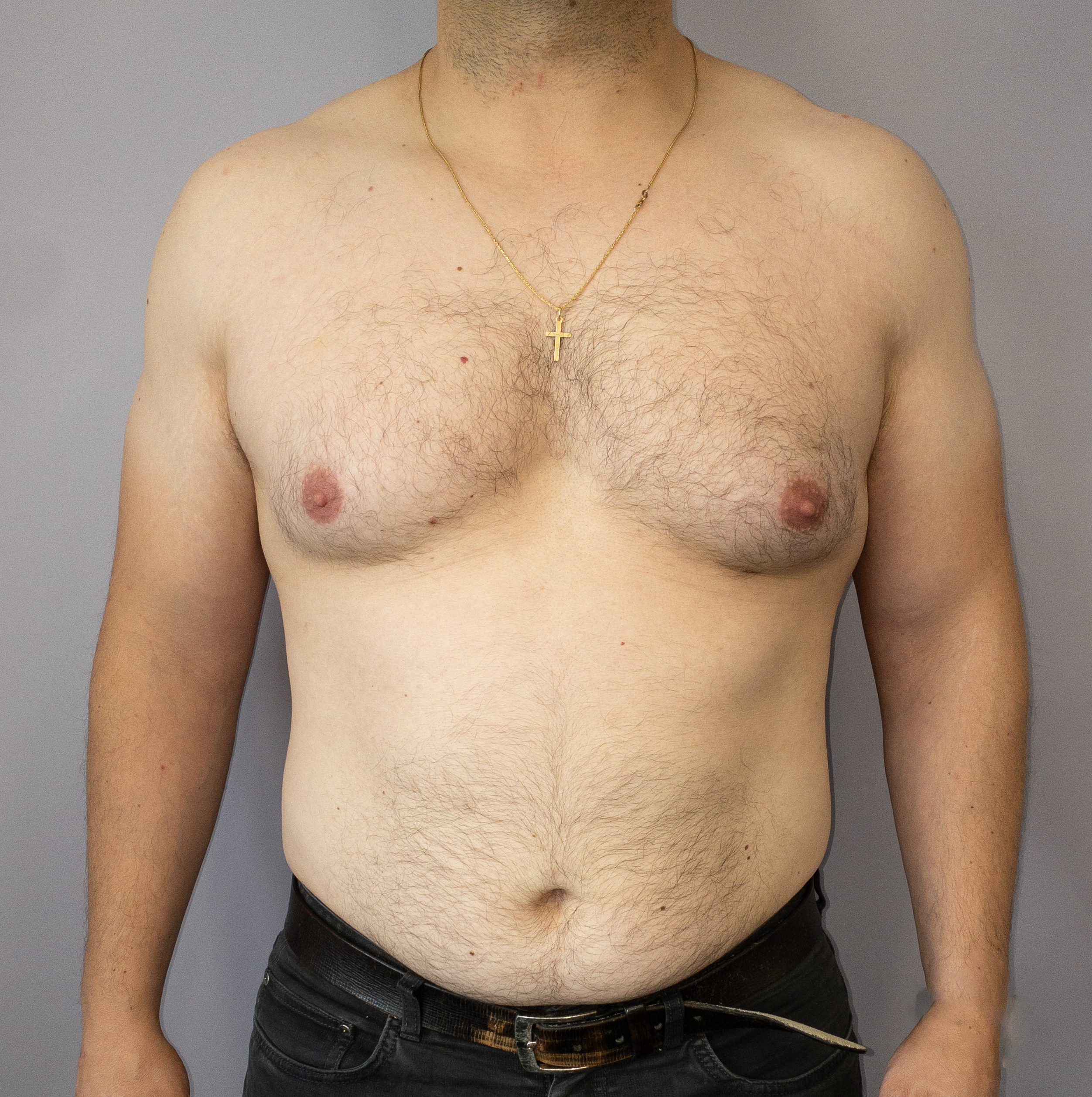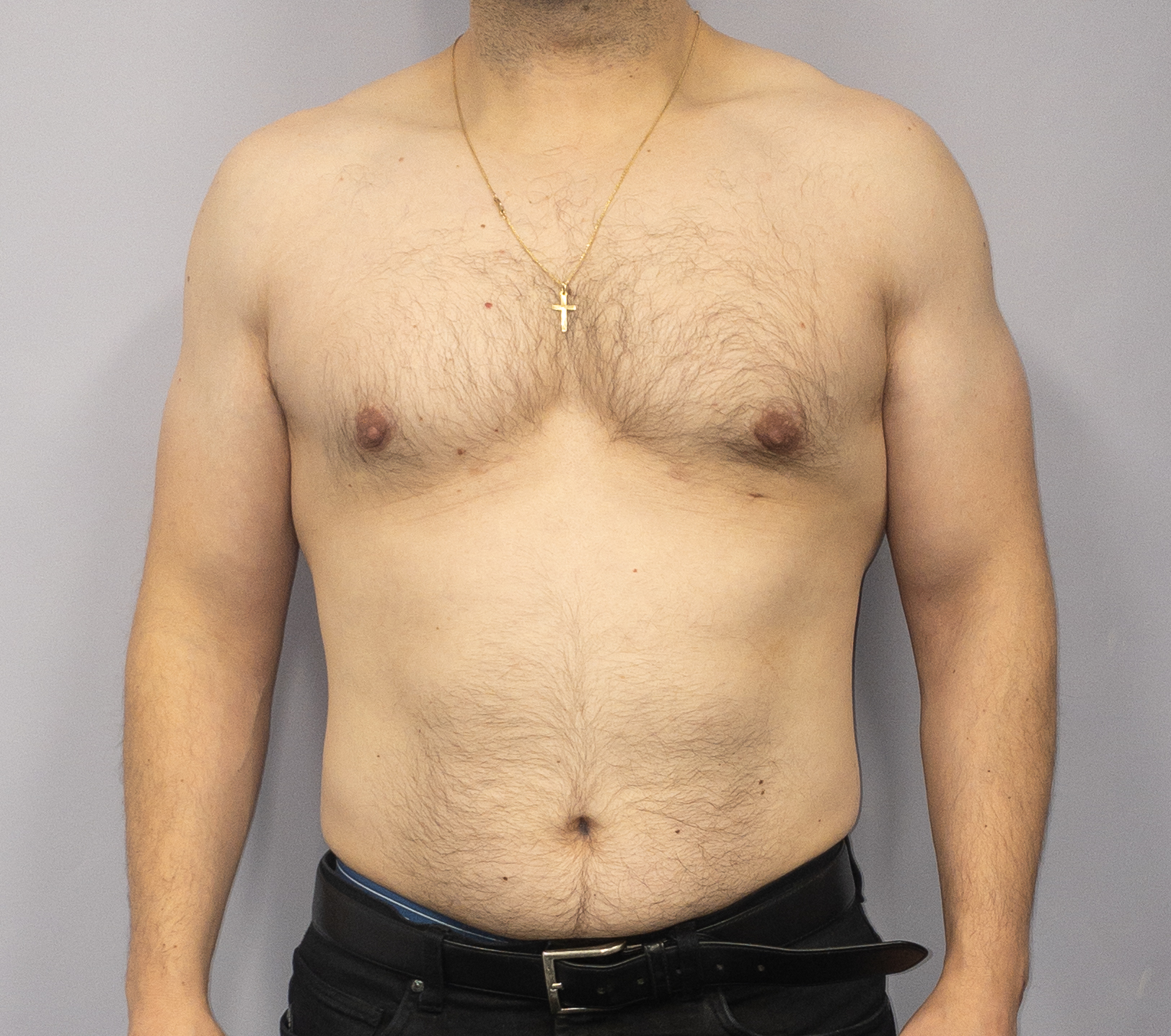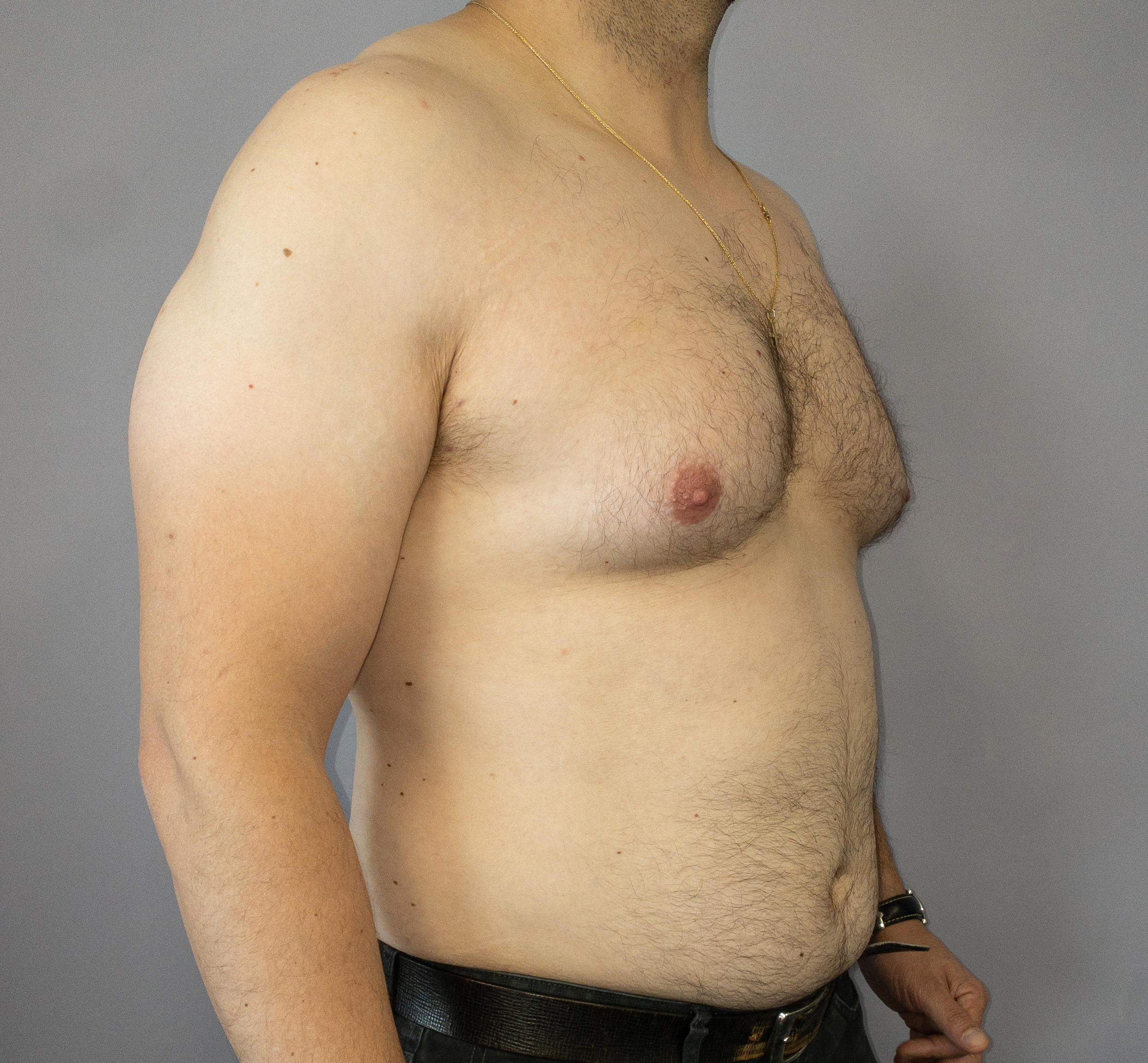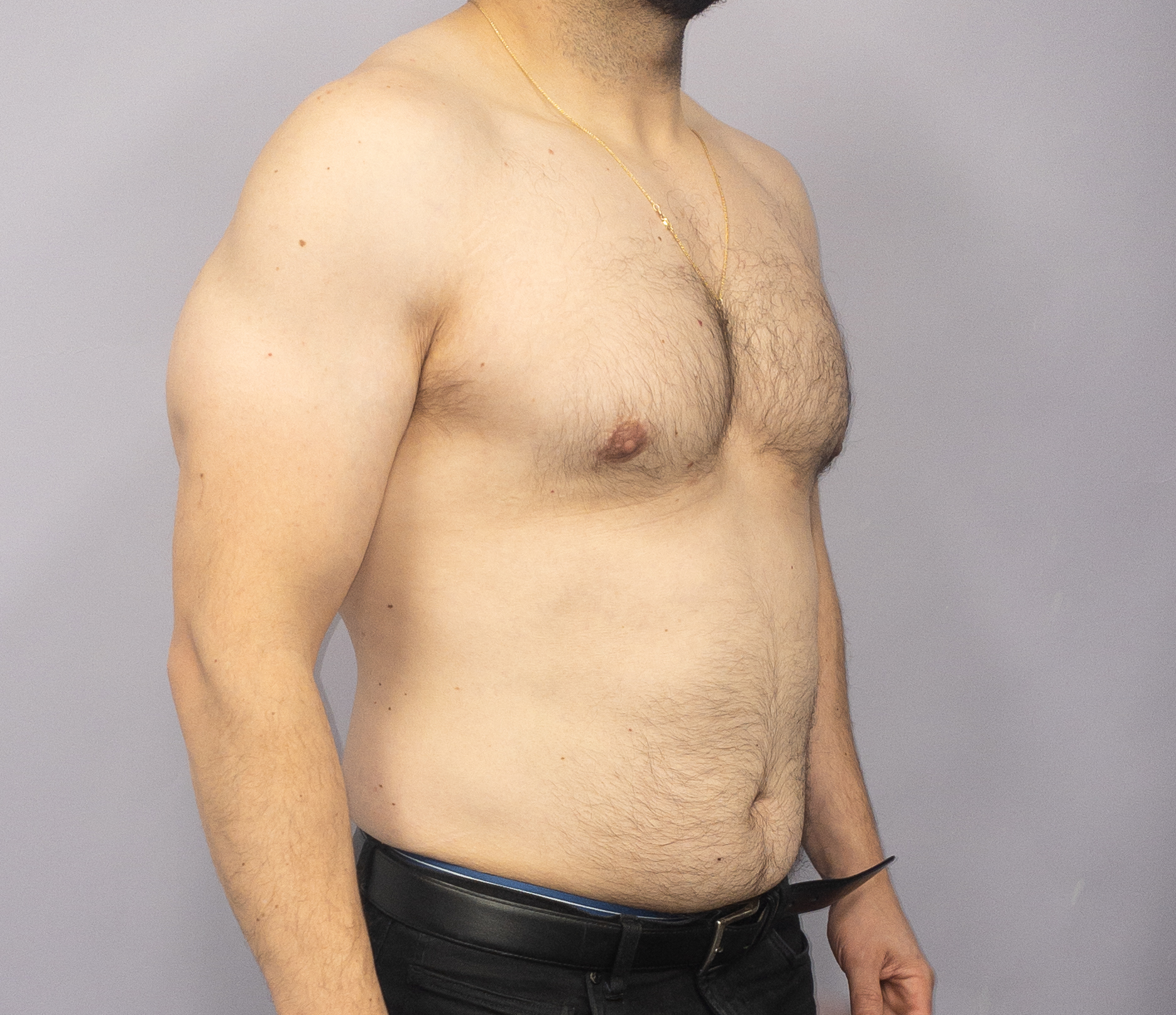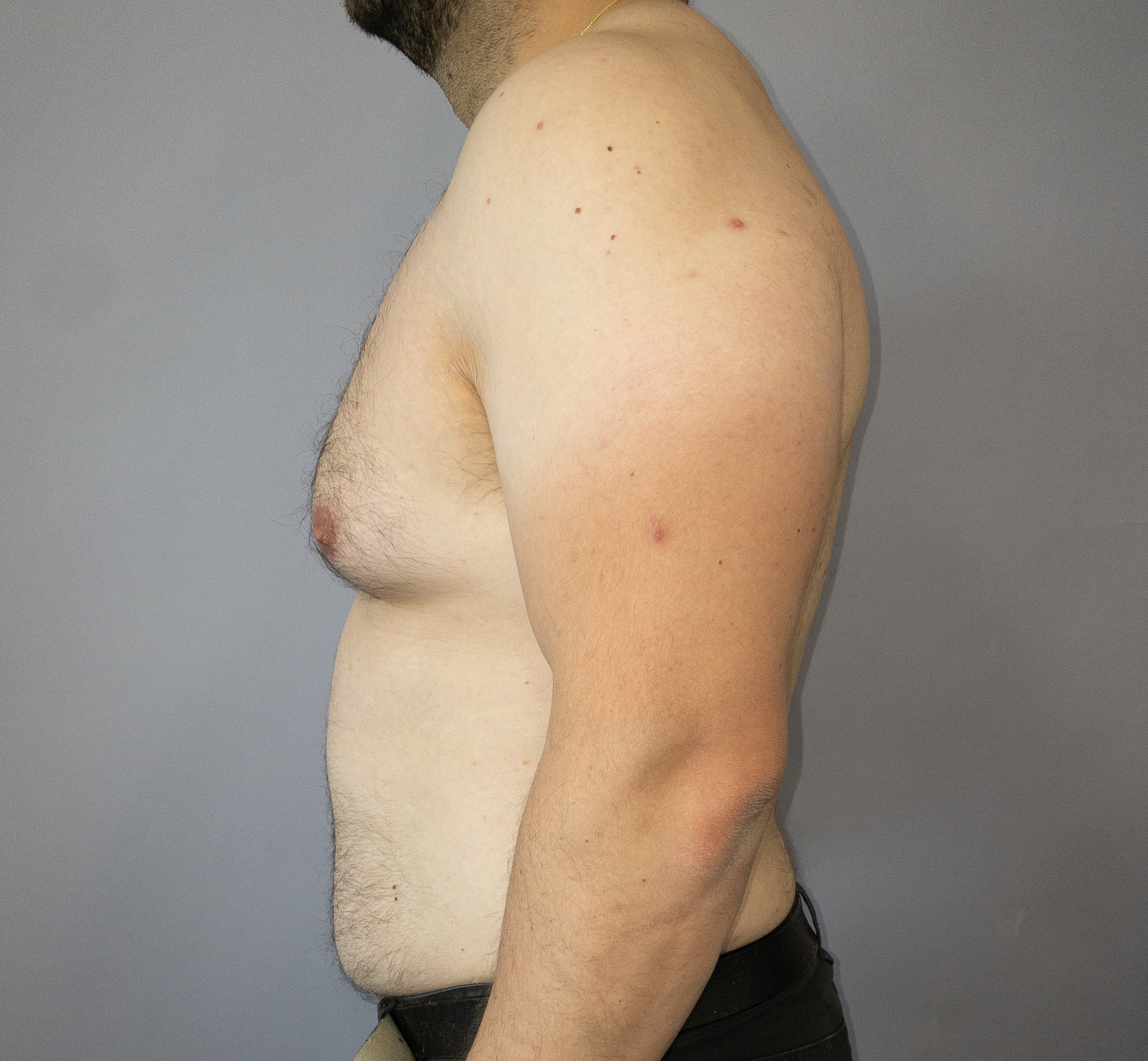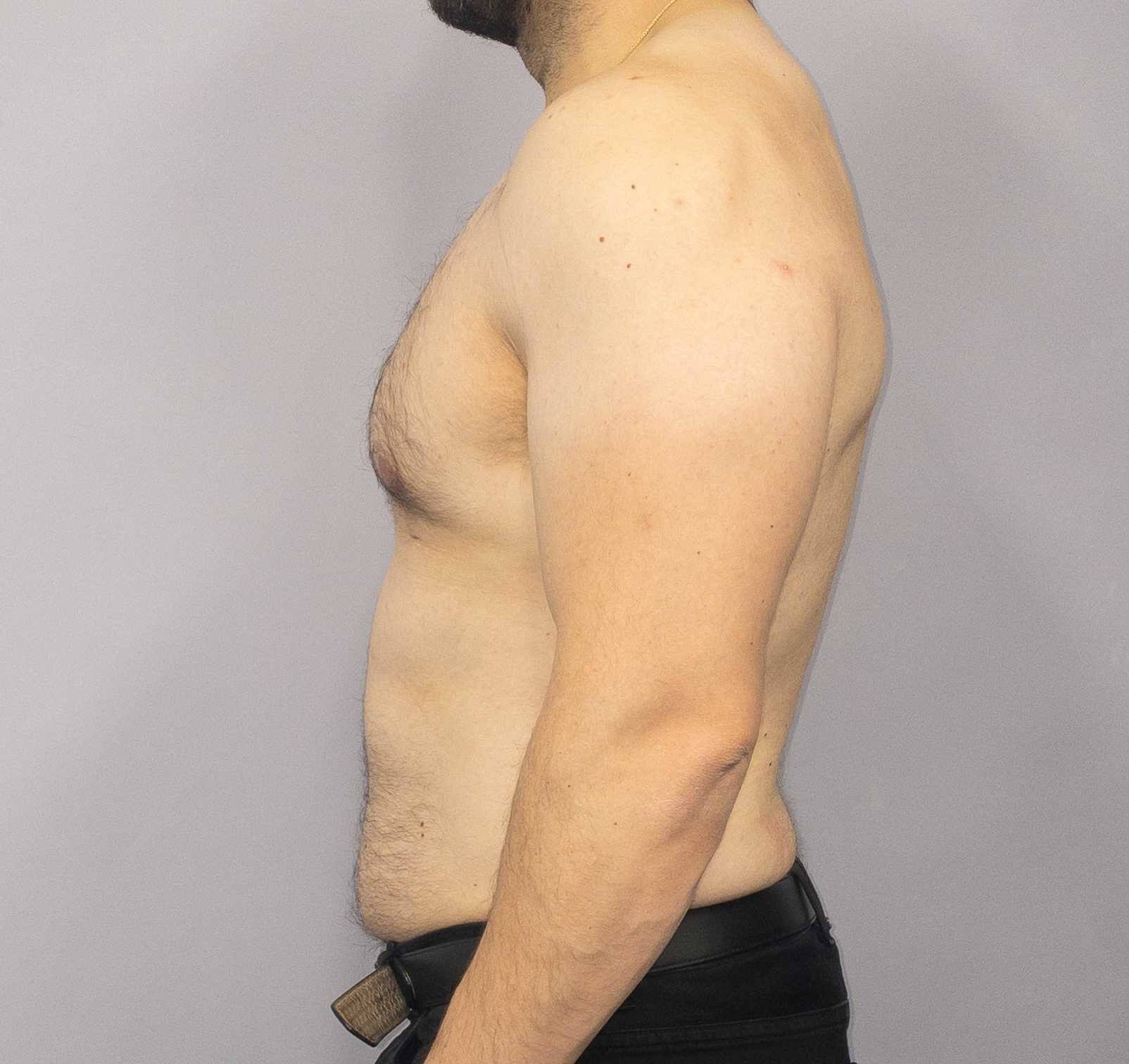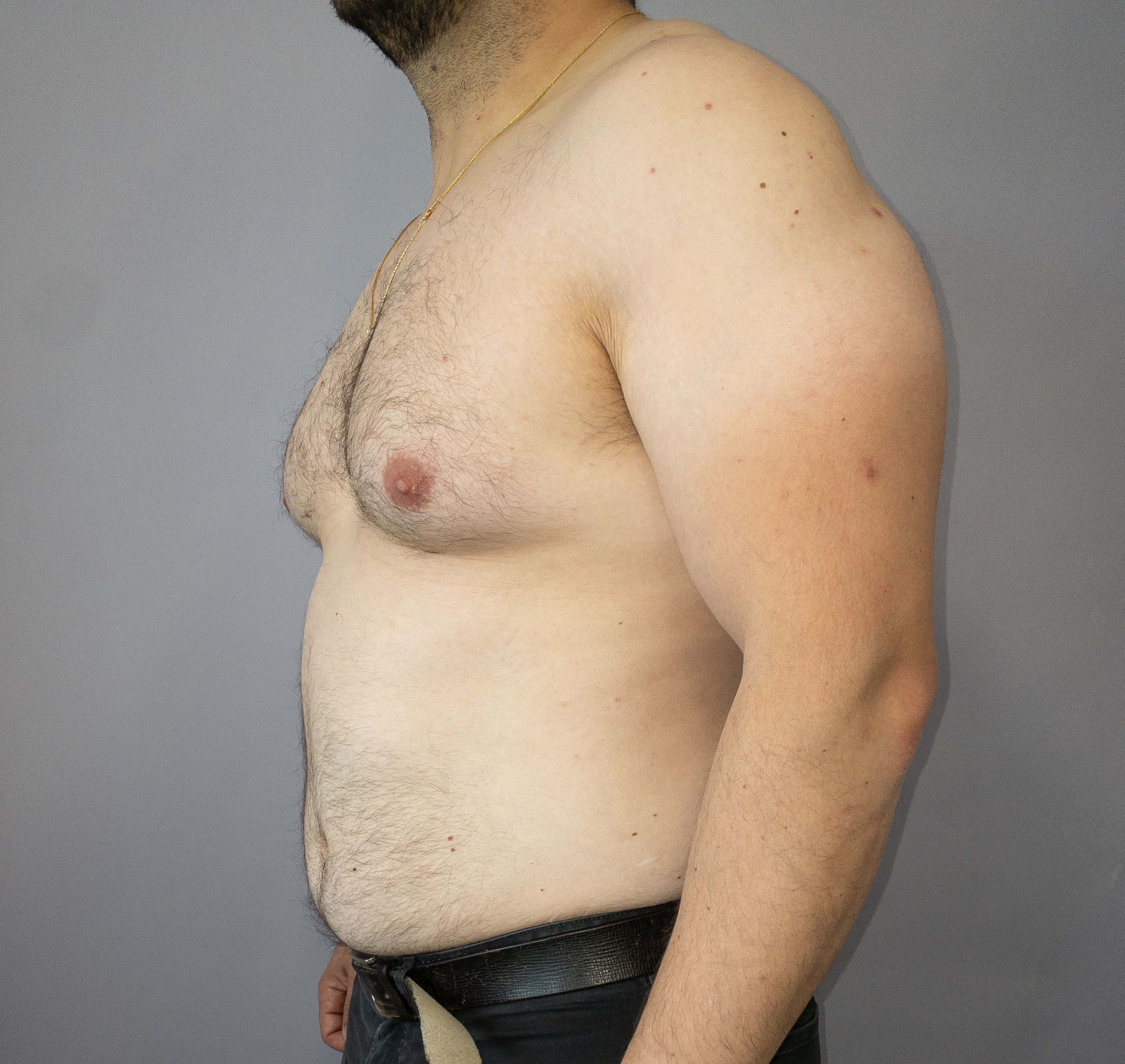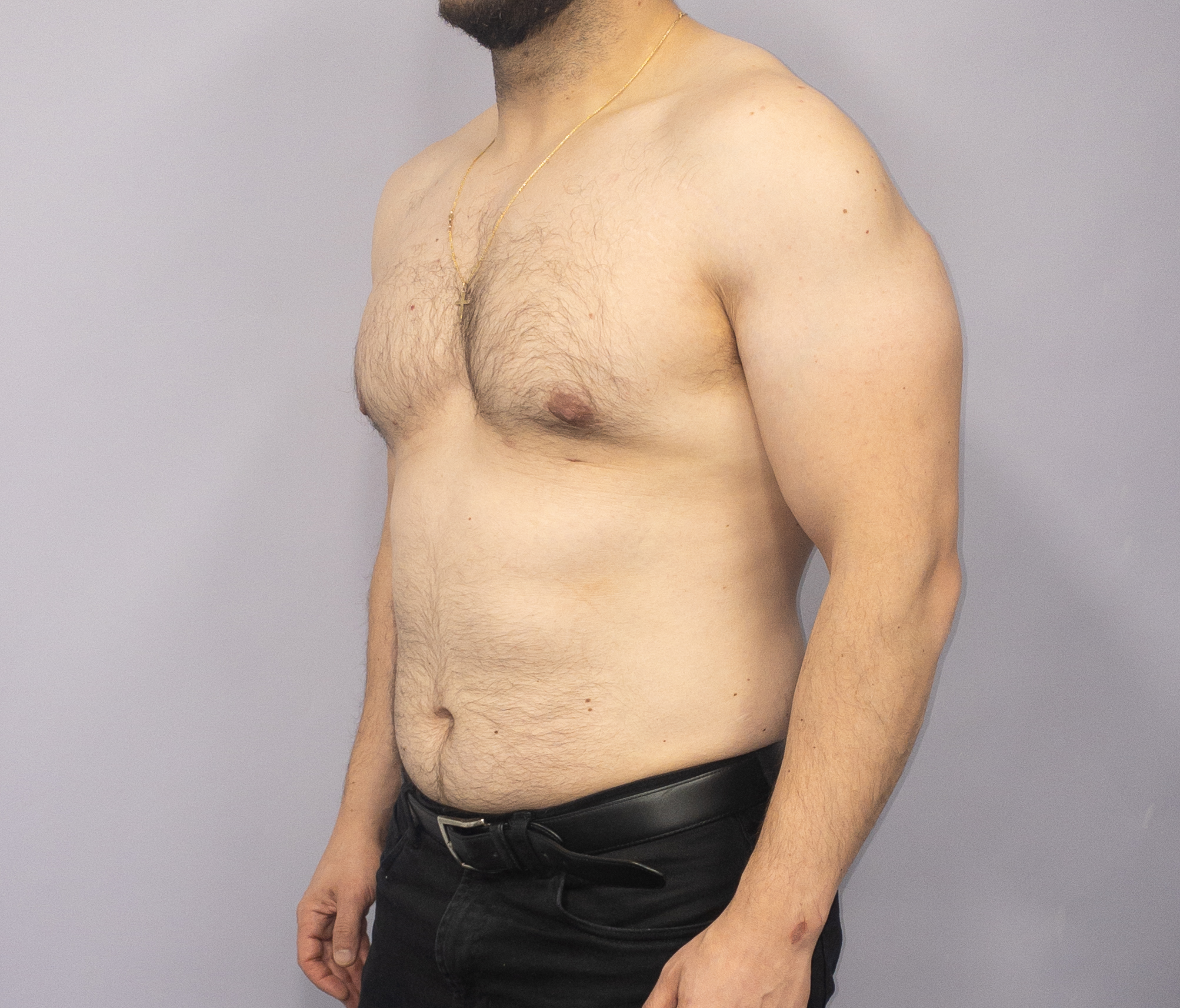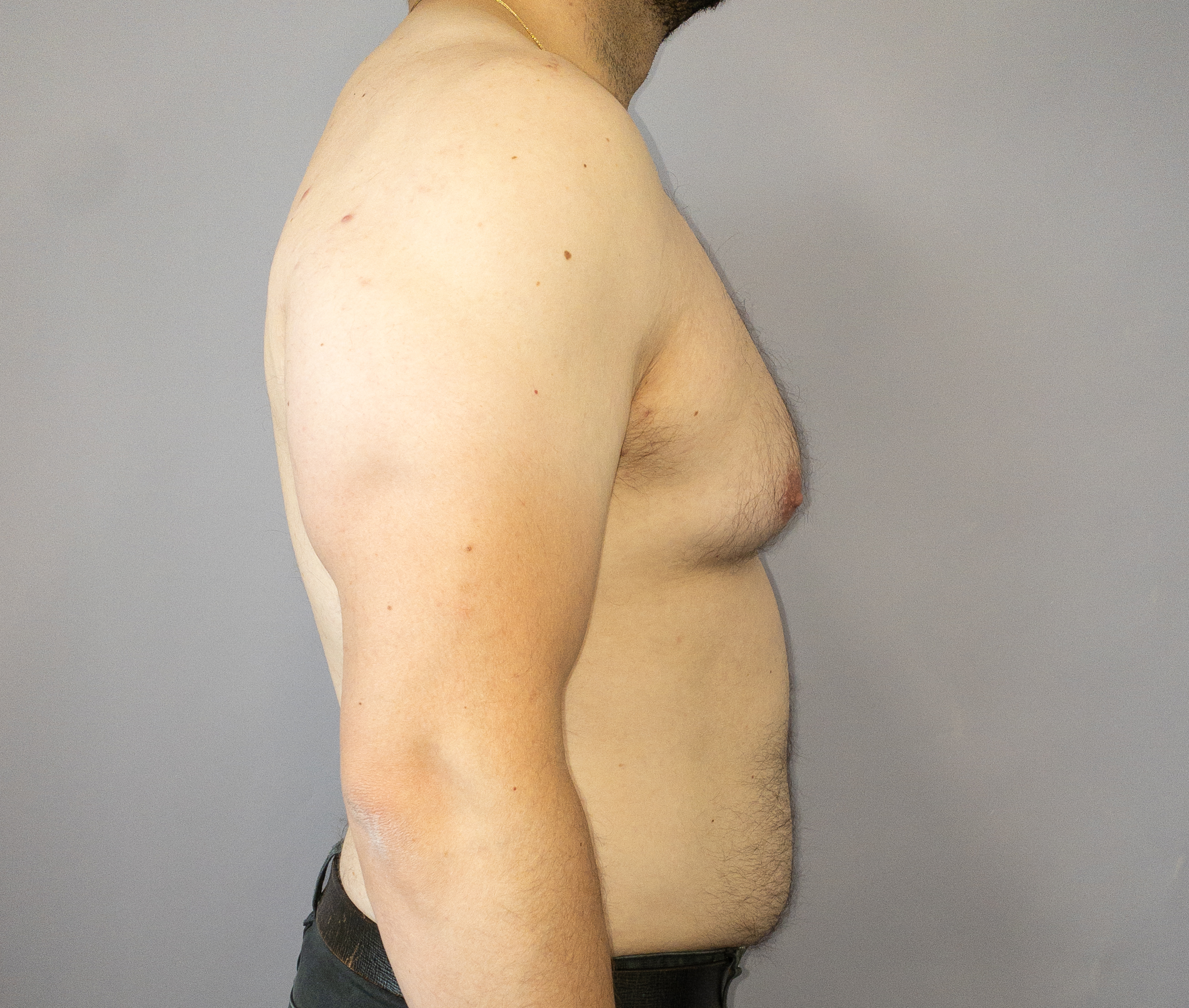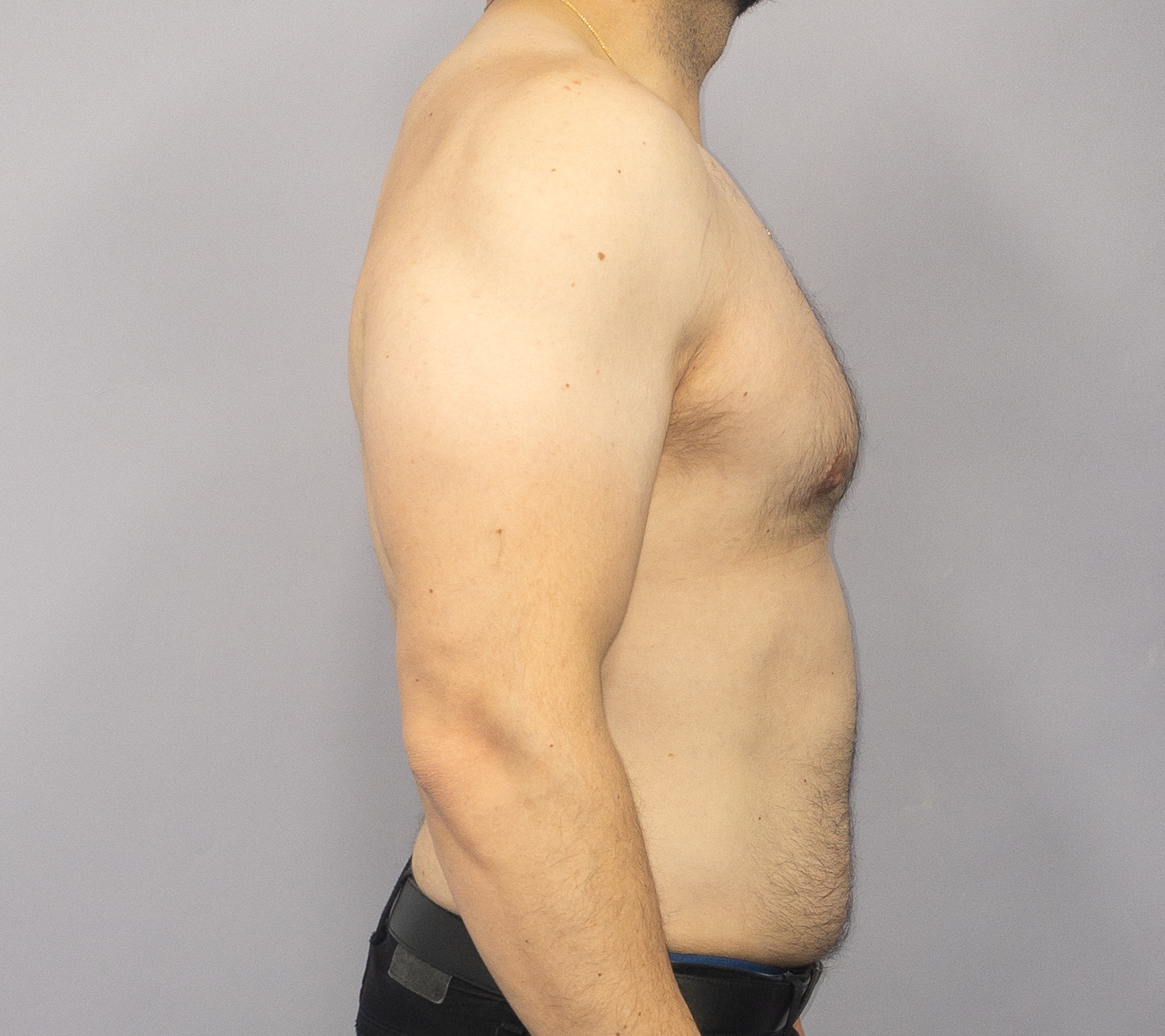Gynaecomastia is a very common issue for many men, and describes the presence of excess fibrofatty tissue over the male chest, sometimes with excess skin, creating a feminised chest appearance (sometimes referred to as ‘man boobs’). This can be a very sensitive and personal condition, with many patients delaying treatment due to feelings of embarrassment.
Richard takes a sensitive and pragmatic approach to gynaecomastia. Being understanding and open allows patients to feel more comfortable discussing a sometimes difficult topic, which empowers men to seek help to become more comfortable with their bodies.
Gynaecomastia is most often managed with surgery, either direct excision, or in combination with liposuction to fine tune contour. Occasionally, excess skin must also be removed.
What can I expect?
As part of a routine history and examination, the most likely cause for your gynaecomastia will be diagnosed. As part of this diagnostic process, additional endocrinological (hornone) or radiological tests may need to be undertaken. If required, you may be referred to an endocrinologist for management if a hormonal issue is found.
Routine pre-operative photographs will be taken and a surgical plan discussed in order to address all aspects of your chest contour. It is common for the chest skin to retract to a variable degree after removal of excess subcutaneous fibrofatty tissue, which may take a few months or more to attain the final contour.
What happens after surgery?
Gynaecomastia surgery is undertaken most often under general anaesthetic. Depending on your circumstances, you may be able to go home the same day or rest in hospital over night. A surgical drain may be required, which is usually removed in the first day or so after surgery. Prior to waking from anaesthesia, you will be fitted with a compression garment which should be worn at all times aside from showers for the first two weeks or so. Upper body gym work outs can resume after one month.
Possible complications:
The decision to undergo gynaecomastia surgery should only be made after considering if the potential benefits can achieve your aims, and whether the risks are acceptable to you. The possible risks/ complications of thigh lift include (but are not limited to):
- Cardiac problems, including heart attack or arrythmias.
- Venous thromboembolism (including deep vein thrombosis and pulmonary embolism, which may be fatal).
- Surgical site infection.
- Haematoma/ seroma requiring return to theatre.
- Wound breakdown, delayed healing or protruding sutures.
- Conspicuous scars, including hypertrophic, stretched or migrated scars.
- Possible need for revisional surgery. Richard will only consider revising your gynaecomastia surgery if he believes:
- there is a definable structural issue,
- this issue is realistically able to be improved with surgery and
- the risk of revisional surgery causing a worse result are minimal.
- Dissatisfaction with the degree of chest skin tightening or pectoral definition.
- Altered nipple sensation (including hypersensitivity).
- Contour asymmetry or sunken/ inverted nipple/ areola complex.
- Nipple/ areolar necrosis (death of the nipple or surrounding tissue)
